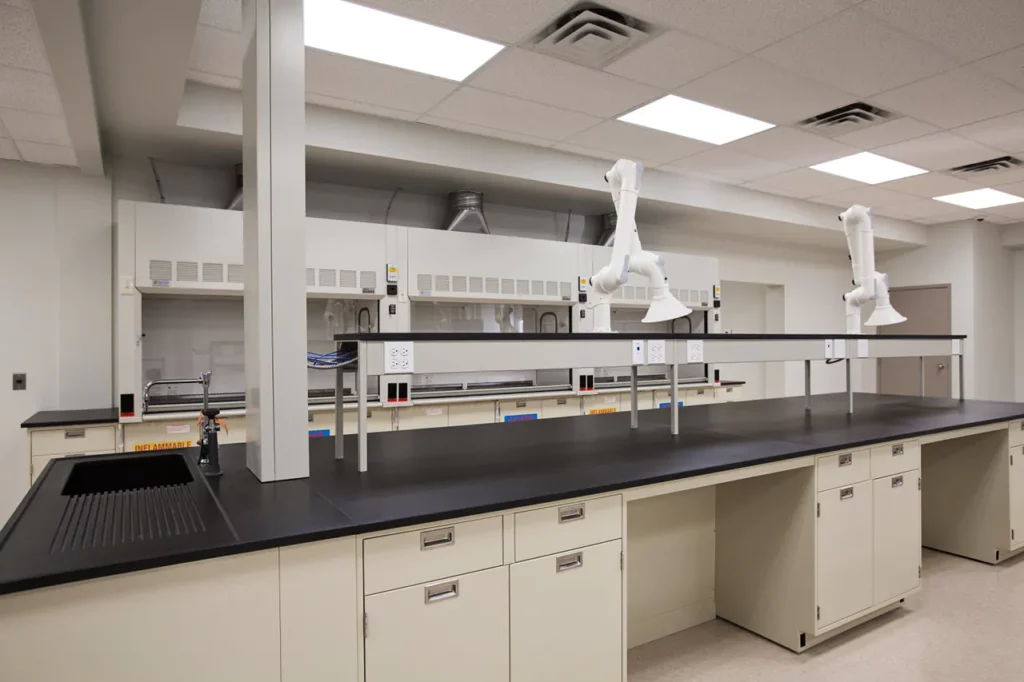Constructing a laboratory requires careful planning and well-informed decisions. Get the essential considerations you need to ensure your laboratory is built effectively with this guide
Filtration systems in a laboratory are essential for proper air-flow throughout the building. This is especially true in science laboratories that house chemical agents and other hazardous materials. A poor filtration system would not only lead to a hazardous environment, it can also interfere with the quality of your experiments and research. Therefore, when you’re designing your laboratory ventilation and filtration systems, make sure you invest in the right kinds of equipment.
Proper ventilation and filtration systems should be able to manage the levels of solvents, gases, and particulates within the laboratory. A good system should also ensure that clean air is being circulated throughout the building. One of the most important piece of equipment in a lab’s filtration system is a fume hood – this not only filters out hazardous materials from entering into the lab, but it also helps to prevent chemical agents and other toxins from being released into the environment. It is essential that the HVAC system is sufficient to supply enough air to the lab through the use of a make up air unit interlocked with the fume hood to ensure the fume hood can function at it’s intended design. Investing in adequate ventilation and filtration systems will protect your lab personnel as well as help improve the quality of experiments you conduct in your science laboratory.
In addition to ventilation and filtration, other features such as proper lighting, wall covering, and flooring are also necessary for a safe laboratory. Lighting should be very bright in order to help reduce eye strain among personnel and eliminate any possibilities of accidental exposure. The walls of the lab should be highly resistant to shock and scratches. The lab’s flooring should also be impermeable, in order to contain any spills that may occur. Properly investing in these design elements will guarantee a safe working environment for all personnel entering the lab.
In addition to these design elements, laboratories should also invest heavily in their ventilation and filtration systems. It is essential that the laboratory maintains a high air quality with sufficient ventilation to prevent exposure and laboratorian illness. Investing in an advanced filtration system helps limit the spread of any harmful particles or fumes that could accumulate in the laboratory’s environment. Additionally, lab personnel can take additional steps such as using fume hoods while performing experiments to minimize contamination further. Adequately investing in appropriate ventilation and filtration systems can create a safer and healthier laboratory environment for all personnel involved.

